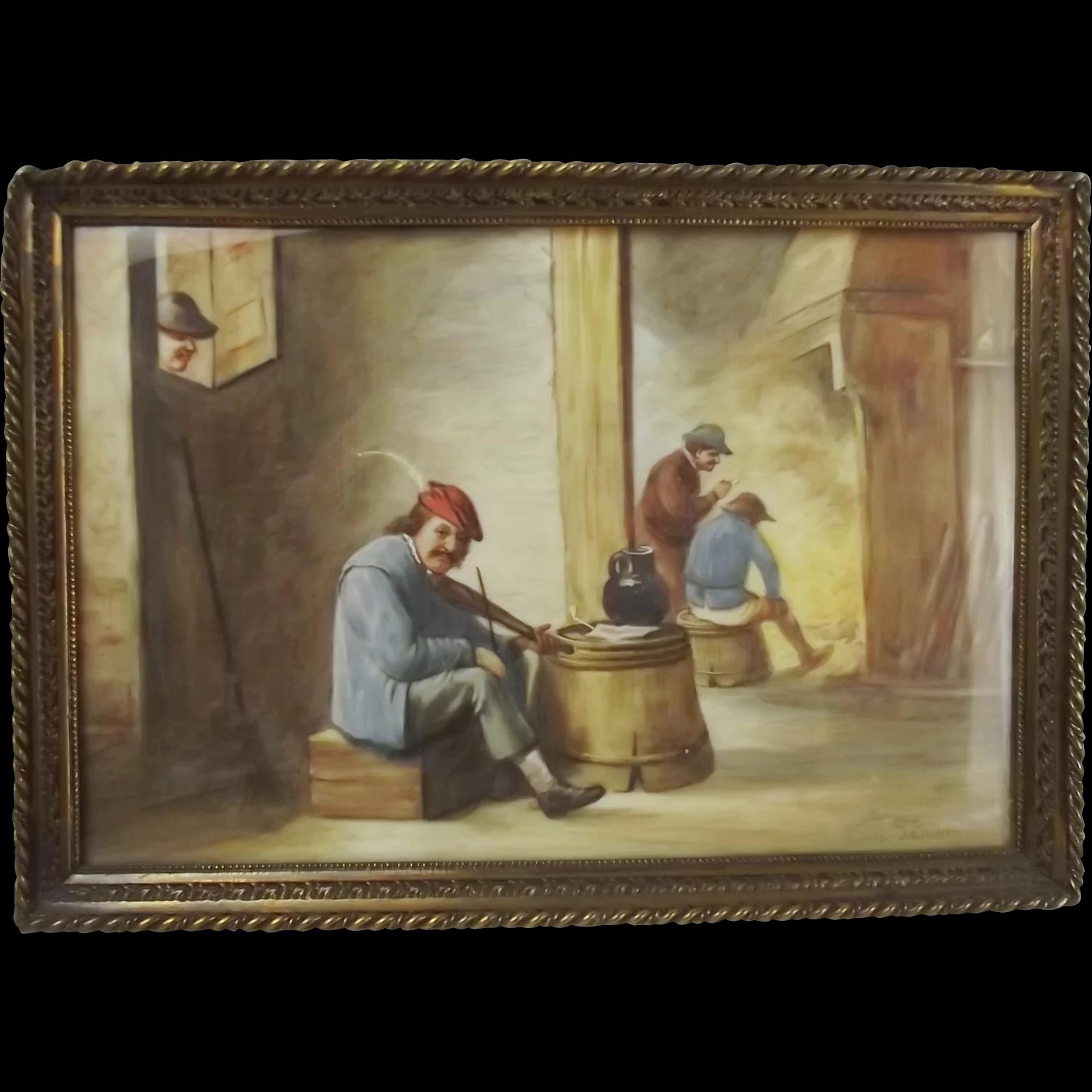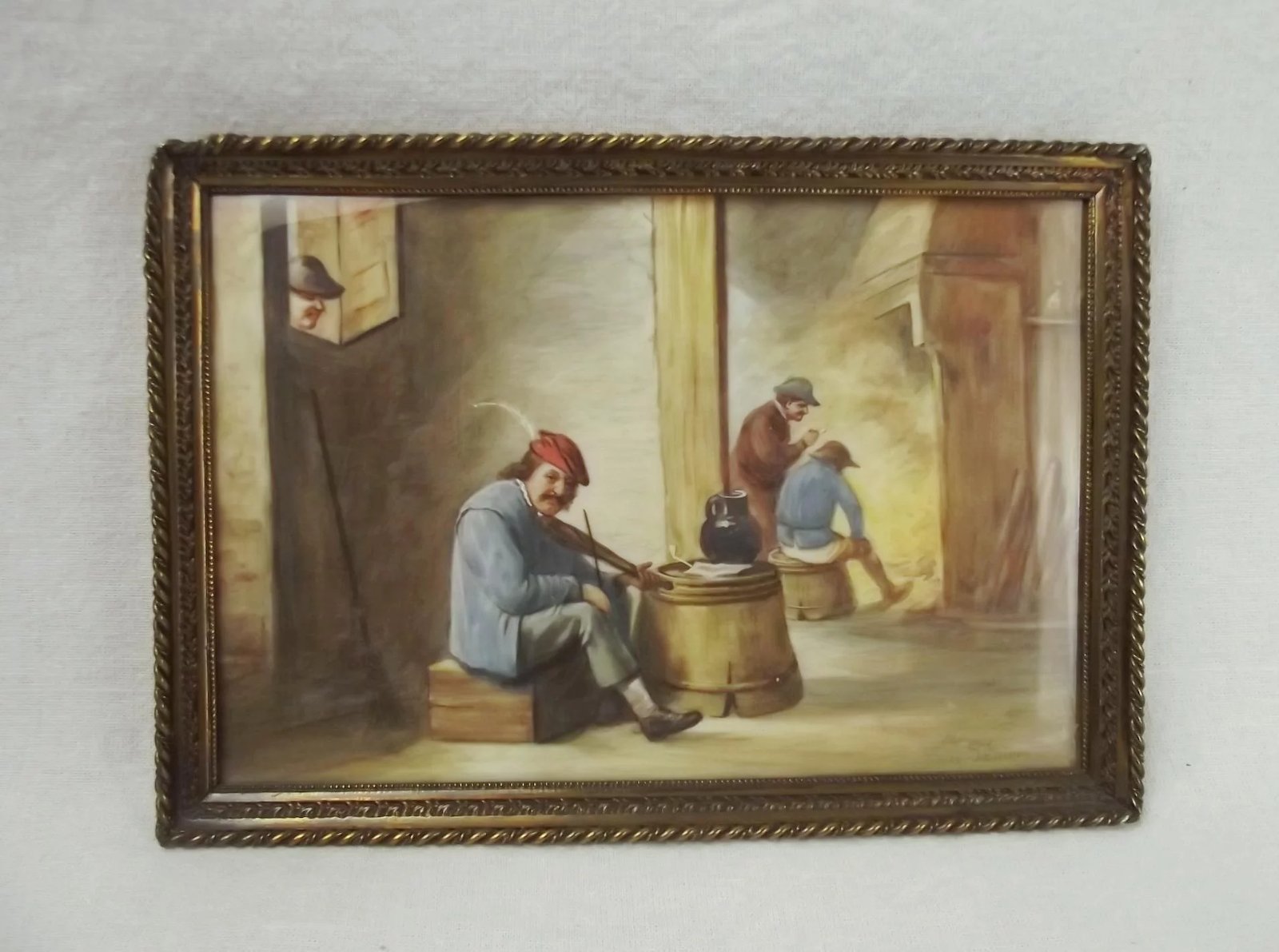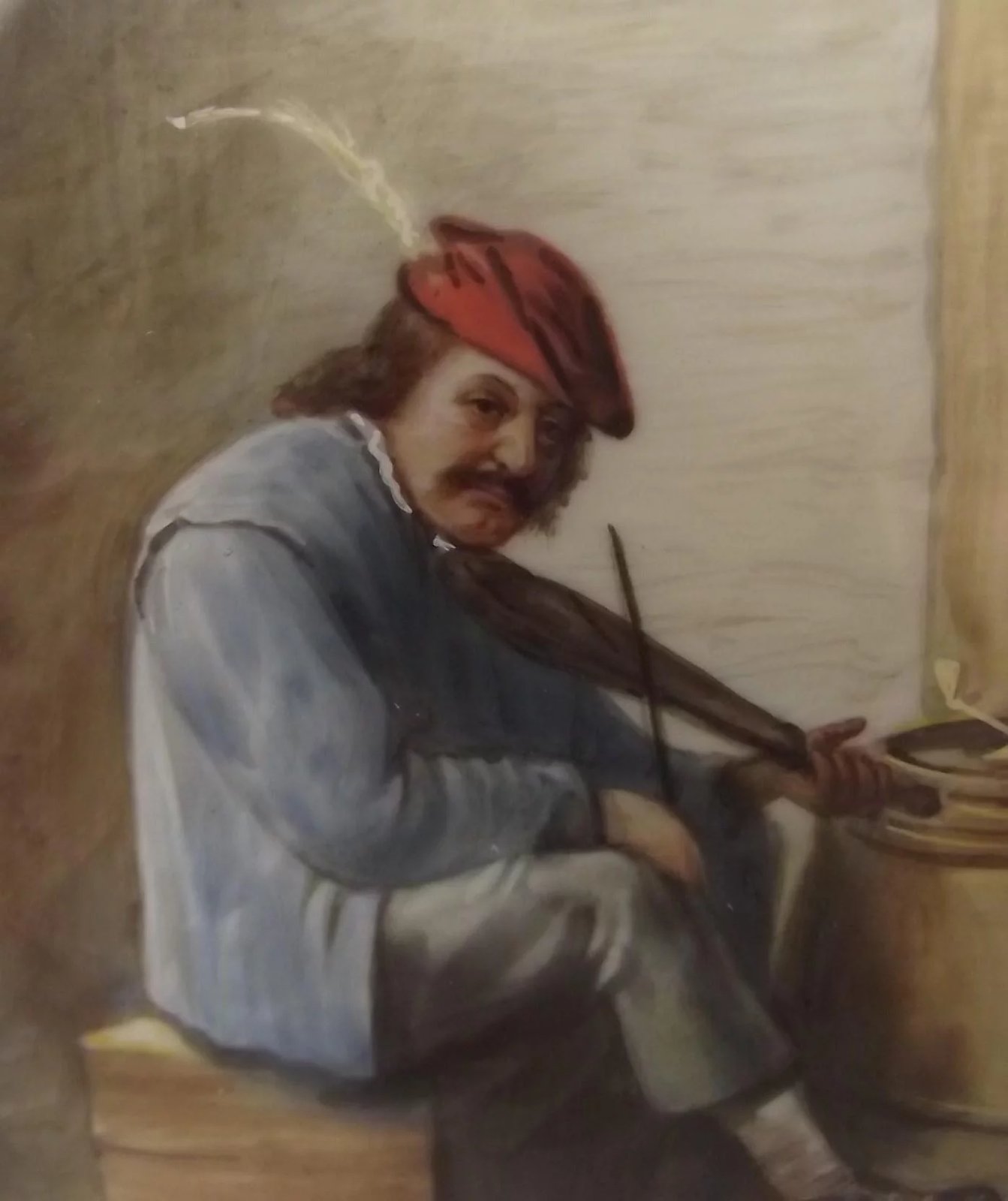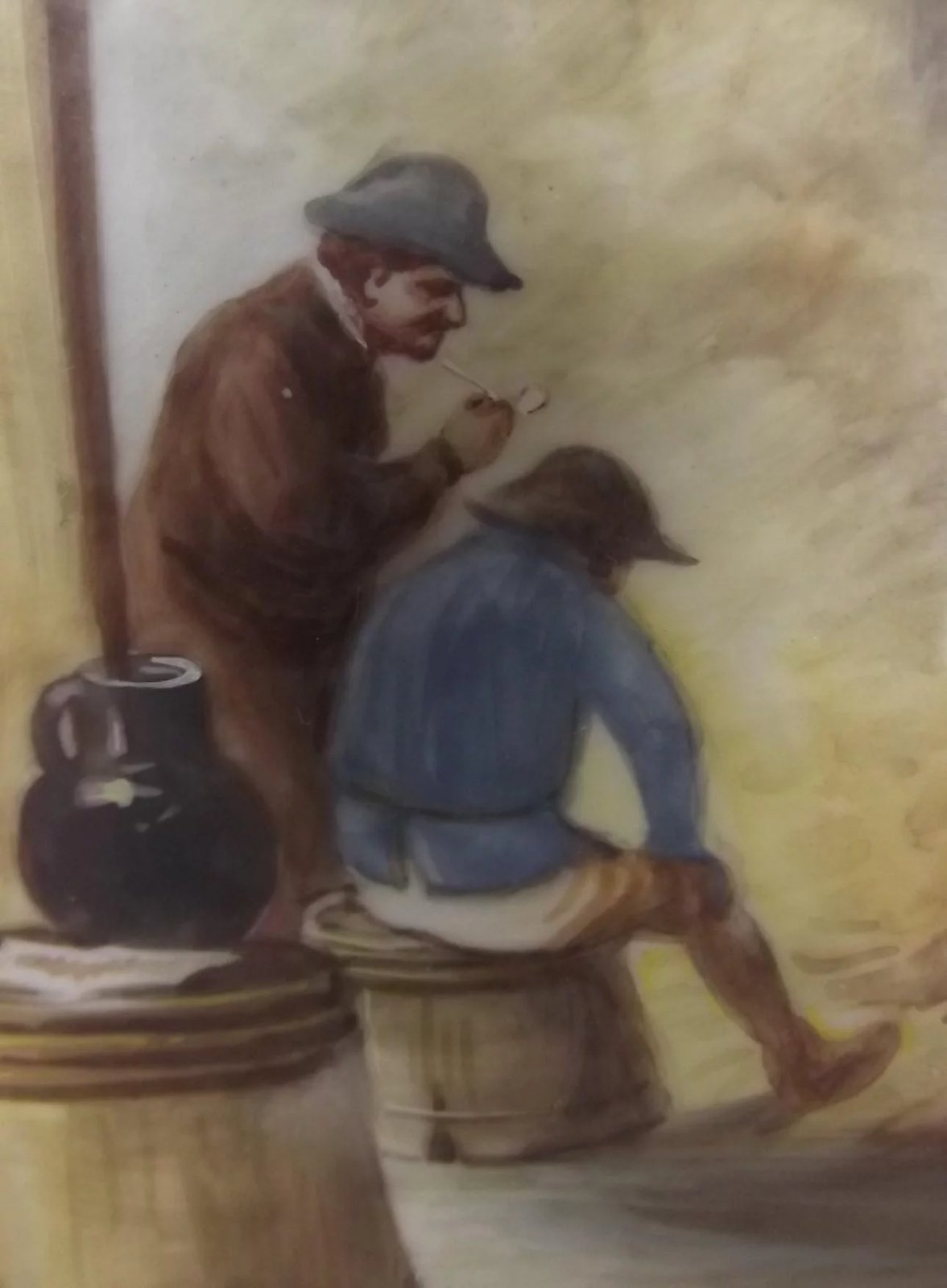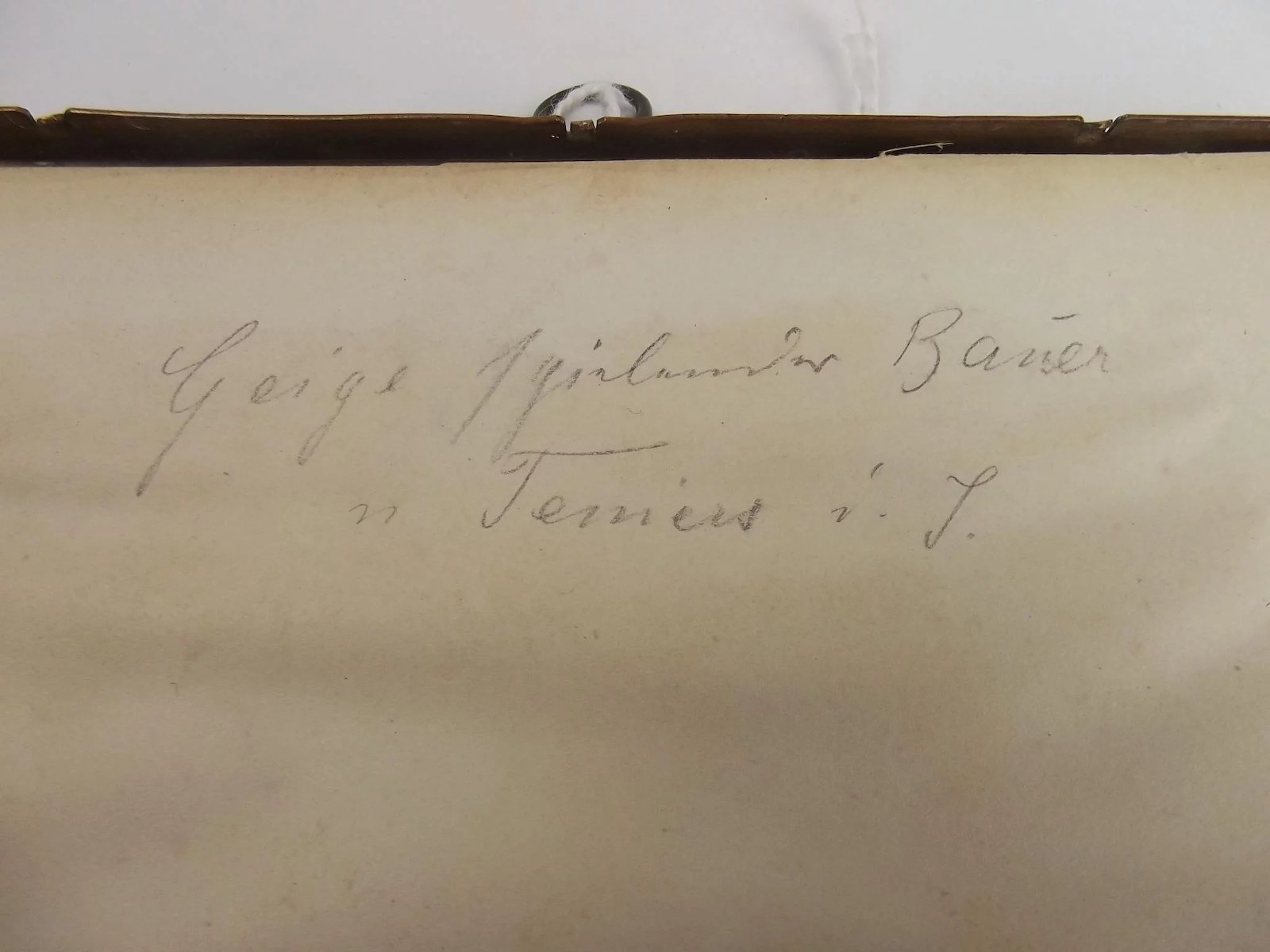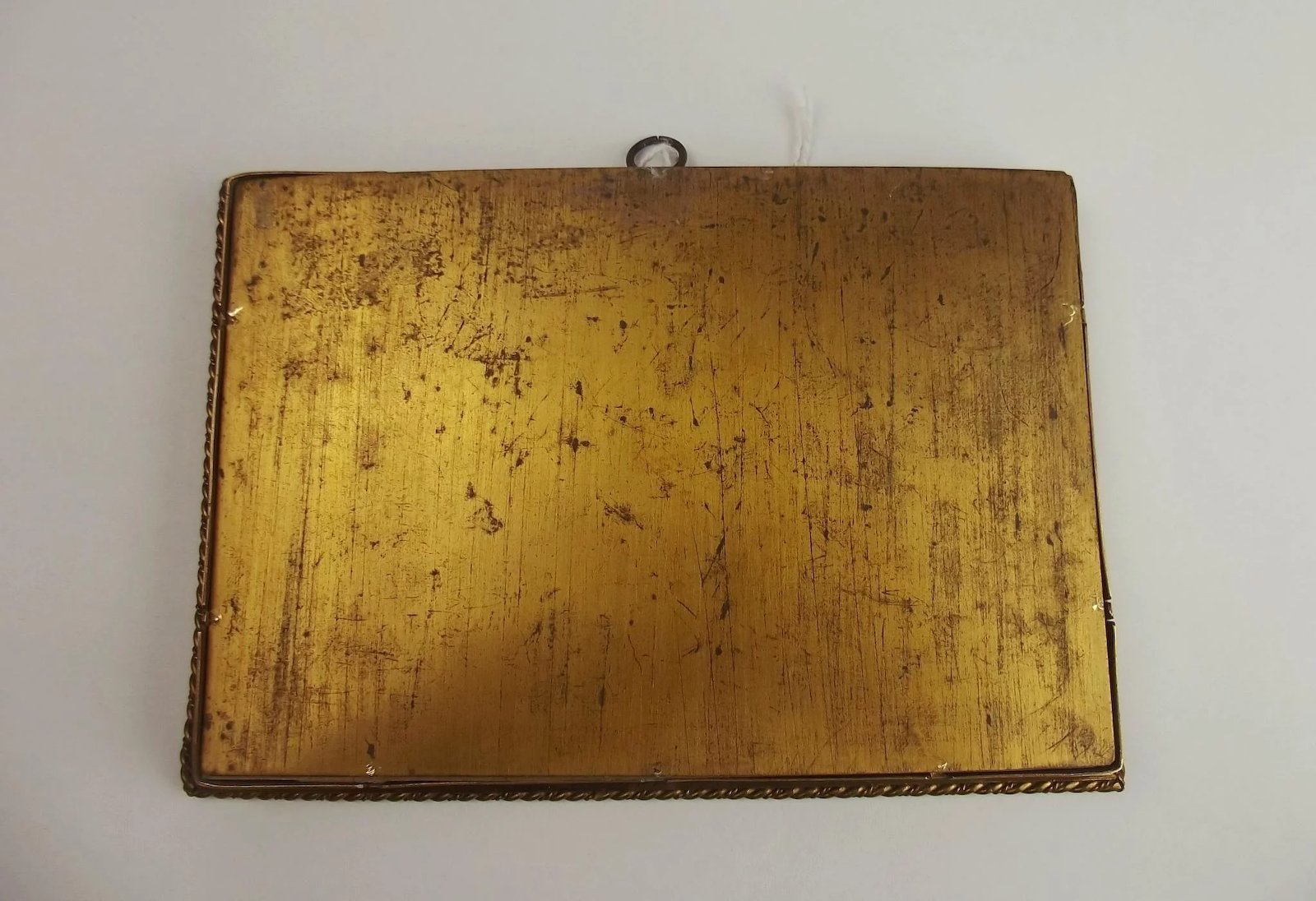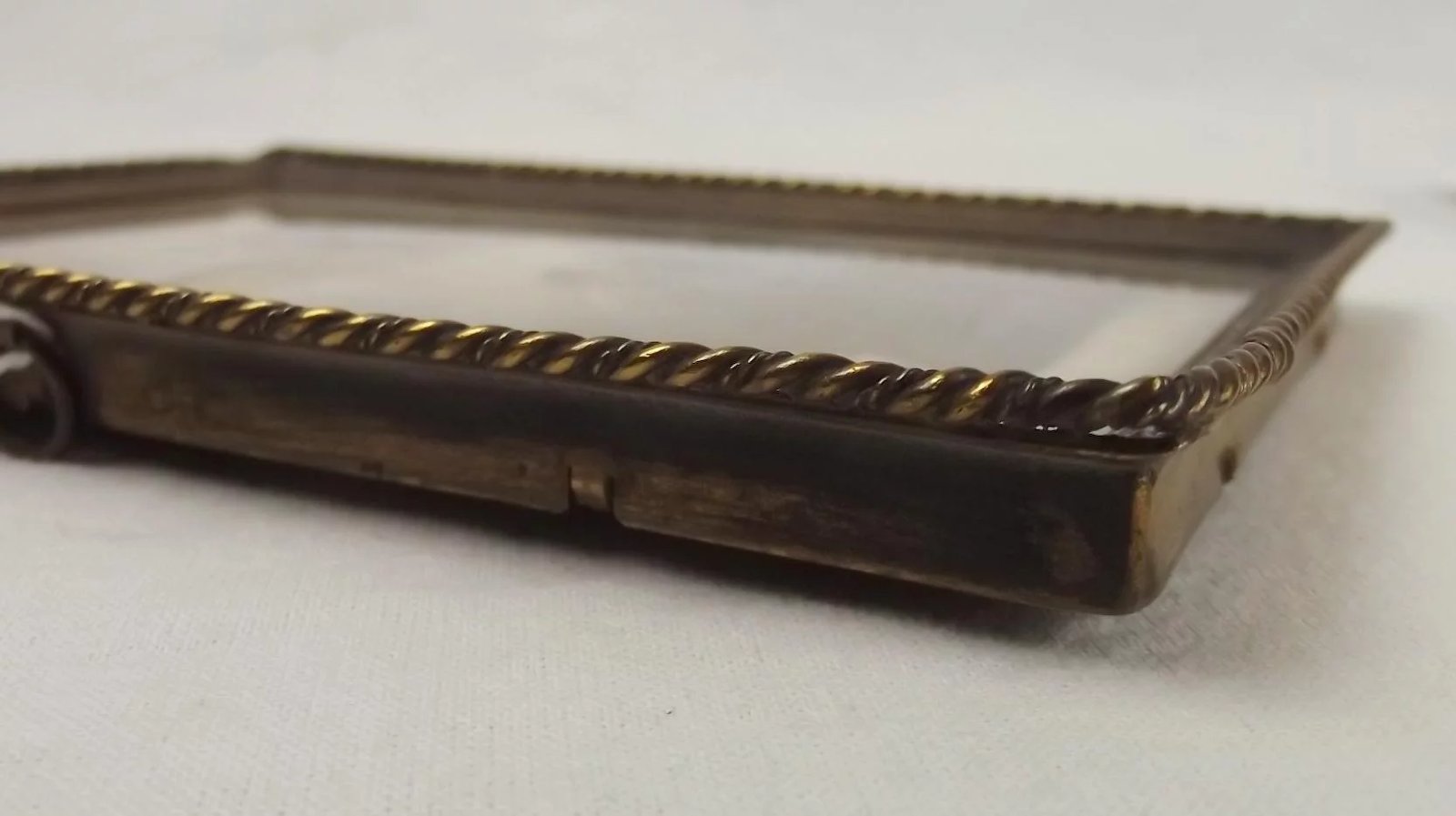~ Framed Miniature Painting Of A Tavern Scene After David Teniers The Younger ~
A wonderful small painting on card of a tavern scene after David Teniers the Younger (1610–1690).
The painting depicts a man in traditional peasant clothes with a fiddle overlooked by another man through a window, with two men by an open fire in the background.
The painting has all the hallmarks of a Teniers piece, but we cannot say for sure that this is a genuine original Teniers. This is due in part to the signature, which does not quite fit with other Teniers signatures we’ve seen and in part to the writing on the reverse of the painting which bears the name ‘Geige Barér’ as well as Teniers. So the piece is quite likely to be a copy of, or ‘in the style’ of David Teniers.
However, this is still a beautifully painted piece with some fantastic detail, painted by a very skilled artist and has some age to it.
The painting is presented in a glazed ornate brass frame.
~ Dimensions ~
The painting measures 14cm (5 ½ inches) by 9cm (3 ½ inches).
The frame measures 15.5cm (6 inches) by 11cm (4 ¼ inches).
It weighs 205g.
~ Condition ~
The painting is in a wonderful condition with no damage.
The frame is in a good condition with only some scratches to the reverse.
~ David Teniers the Younger ~
David Teniers the Younger or David Teniers II (15 December 1610 – 25 April 1690) was a Flemish painter, printmaker, draughtsman, miniaturist painter,
staffage painter, copyist and art curator. He was an extremely versatile artist known for his prolific output. He was an innovator in a wide range of
genres such as history, genre, landscape, portrait and still life. He is now best remembered as the leading Flemish genre painter of his day. Teniers is
particularly known for developing the peasant genre, the tavern scene, pictures of collections and scenes with alchemists and physicians.
He was court painter and the curator of the collection of Archduke Leopold Wilhelm, the art loving Governor General of the Habsburg Netherlands. He
created a printed catalogue of the collections of the Archduke. He was the founder of the Antwerp Academy, where young artists were trained to draw
and sculpt in the hope of reviving Flemish art after its decline following the death of the leading Flemish artists Rubens and Anthony van Dyck in the
early 1640s. He was influential on the next generation of Northern genre painters as well as on French Rococo painters such as Antoine Watteau.
#1157


